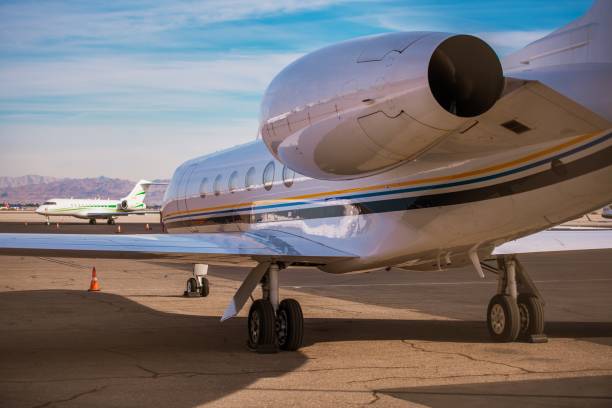Organ Transport by Jet vs Helicopter: Critical Analysis of Speed, Safety, and Success Rates

When every second counts in organ transplantation, the choice between jet and helicopter transport can literally mean the difference between life and death. With approximately 17 people dying daily while waiting for organ transplants in the United States and over 103,000 people currently on the national transplant waiting list, optimizing organ transport methods through expert aviation coordination has never been more crucial for maximizing transplant success rates and saving lives.
The Critical Time Factor in Organ Viability
The success of organ transplantation depends heavily on ischemic time—the period between organ removal and transplantation when the organ lacks blood flow. Each organ type has specific time constraints: hearts and lungs remain viable for 4-6 hours, livers for 8-12 hours, and kidneys for 24-36 hours under proper conditions.
The duration of ischemic time is positively correlated with the incidence of primary nonfunction (failure to function after a transplant), making swift, reliable transport coordination essential. Professional aviation brokers specializing in medical transport work exclusively with FAA-certified operators to ensure optimal routing and timing for these life-critical missions.
Understanding Current Organ Transport Statistics
Recent data reveals important trends in organ transport utilization:
- In 2022, 42,887 organ transplants were performed in the United States, setting a new annual record
- Currently, there is no national tracking system for organs to prevent them from being lost, delayed in transit, or damaged, with more than 28,000 donated organs going unused annually due to system inefficiencies
- Weather-related delays affect approximately 15-20% of organ transport flights annually
These statistics underscore the critical importance of expert coordination in selecting appropriate aircraft and routing for each unique transport scenario.
Jet Transport: Advantages for Long-Distance Missions
Speed and Range Capabilities
Commercial and charter jets excel in long-distance organ transport, typically cruising at speeds of 400-600 mph compared to helicopters' 140-180 mph range. For distances exceeding 200 miles, jets can reduce total transport time by several hours—a significant margin when organ viability windows are measured in hours.
Weather Resilience and Reliability
Recent changes in organ allocation and distribution policies result in broader geographic sharing of donor organs, which means a higher percentage of organs will be transported over longer distances. Jets operate above most weather systems at altitudes of 25,000-45,000 feet, making them less susceptible to delays from storms, fog, or high winds that commonly affect helicopter operations.
Professional aviation coordinators work with FAA-certified operators to assess weather patterns and select aircraft types that minimize weather-related delays, crucial when transport delays can compromise organ viability.
Extended Range Without Fuel Stops
Modern jets can travel 2,000-4,000 miles without refueling, enabling coast-to-coast organ transport without intermediate stops. This capability proves particularly valuable for rare organ matches that cross multiple time zones or require transport to specialized medical centers.
Disadvantages of Jet Transport
Ground Transport Requirements: Jets require additional ground transport to and from airports, potentially adding 30-90 minutes to total transport time. Expert coordinators factor this "last mile" challenge into transport planning.
Airport Infrastructure Dependence: Jet operations depend on suitable runway facilities and air traffic control systems, potentially limiting accessibility in remote areas where organ procurement occurs.
Higher Operational Costs: Charter jet services typically cost significantly more per flight hour than helicopter operations, though the investment may be justified for longer distances and complex routing requirements.
Helicopter Transport: Point-to-Point Efficiency
Rapid Response and Landing Flexibility
Helicopter transport reduces the time the organ spends outside the body, thereby maximizing its viability and increasing the likelihood of a successful transplant. Medical helicopters can land directly at hospitals, eliminating ground transport delays and providing door-to-door capability that proves invaluable in urban areas with heavy traffic congestion.
FAA-approved operators conduct Helicopter Air Ambulance Operations specifically for organ transfers, particularly in densely populated metropolitan areas.
Quick Launch Times
Medical helicopters can typically launch within 90-120 minutes of receiving a transport request, compared to longer preparation times for charter jet services. This rapid response capability proves crucial during time-sensitive procurements where every minute counts.
Cost Considerations
Helicopter transport generally costs 40-50% less than comparable jet services for appropriate distances, making it more cost-effective for organ procurement organizations with budget constraints, when coordinated through experienced aviation brokers.
Helicopter Transport Limitations
Weather Restrictions: Statistics show that weather-related delays affect approximately 15-20% of organ transport flights annually, with helicopters facing more weather limitations than jets. Professional coordinators maintain relationships with multiple FAA-certified operators to provide backup options when weather conditions prevent helicopter operations.
Limited Range: Most medical helicopters have effective ranges of 150-300 miles, requiring fuel stops for longer transports that add time delays.
Operational Altitude Restrictions: Helicopter operations below 10,000 feet expose organs to greater temperature and pressure variations compared to high-altitude jet operations.
Transport Method Selection: Best Practices
Professional aviation coordinators specializing in organ transport typically apply these decision-making criteria:
Distance-Based Guidelines
Based on industry experience and operational data:
- Under 150 miles: Helicopter transport often preferred for speed and direct access
- 150-400 miles: Weather-dependent decision requiring expert assessment
- Over 400 miles: Jet transport typically favored for speed and weather resilience
Weather Assessment Protocols
Expert coordinators continuously monitor:
- Current conditions at origin and destination
- Forecast changes during transport window
- Alternative routing options through FAA-certified operators
- Backup transport method availability
Organ-Specific Considerations
Hearts and lungs only have 2 to 6 hours and are more likely to travel via chartered or private planes or helicopters, while kidneys can be preserved for up to 36 hours before being transplanted and are commonly transported via commercial airlines for perfect matches or highly sensitized patients.
Current Transport Cost Analysis
Based on industry estimates, organ transport costs typically range:
- Helicopter Transport: $3,000-$8,000 for regional flights
- Light Jet Transport: $10,000-$25,000 for longer distances
- Commercial Airline: $2,000-$10,000 plus coordination fees
Many insurance providers have specific provisions for emergency organ transport, recognizing the life-saving nature of these flights.
Regulatory Framework and Safety Standards
The Federal Aviation Administration (FAA) oversees flight operations, while the Department of Health and Human Services regulates organ transplantation procedures, with organs transported according to strict medical protocols established by UNOS and other regulatory bodies.
The FAA reports that medical aircraft operations have increased by 15% over the past five years, reflecting growing demand for specialized medical transport services, leading to enhanced coordination protocols between medical flight operators and air traffic control systems.
FAA Initiatives for Improved Organ Transport
The FAA established the Organ Transport Working Group in 2024, whose final report includes recommendations for improving the organ transport process in areas including access, education, logistics, communication, and reporting.
The 2024 FAA Reauthorization Act required establishing a working group to address regulatory barriers and develop best practices for organ transportation, with the transplant community and aviation industry stakeholders proposing 20 recommendations to improve the process.
Technology and Future Innovations
Current preservation technology is evolving to extend transport capabilities:
Advanced Preservation Systems
Innovative systems using perfusion have the potential to revolutionize the transport management of donor organs, with normothermic perfusion systems allowing for extended periods of preservation and observation, relative to cold storage.
The FDA has approved several perfusion systems for different organs, with experts predicting these technologies will revolutionize transplant procedures.
Future Transportation Innovations
While still in development phases, several emerging technologies show promise for future organ transport:
Unmanned Aircraft Systems: Regulatory developments may eventually enable drone-based transport for short-distance organ delivery, though current FAA regulations restrict implementation.
Enhanced Weather Capabilities: Advanced aircraft design continues improving helicopter weather resistance and jet efficiency.
AI-Powered Logistics: Future coordination systems may incorporate artificial intelligence for optimized routing and timing decisions.
The Role of Professional Aviation Coordination
Expert aviation brokers specializing in medical transport serve as crucial intermediaries between medical teams and FAA-certified operators. These professionals:
- Maintain relationships with certified operators nationwide
- Provide 24/7 availability for emergency transport coordination
- Assess weather, routing, and aircraft suitability in real-time
- Coordinate ground logistics and medical equipment requirements
- Ensure compliance with FAA regulations and medical transport standards
The role of aviation brokers in organ procurement logistics represents a unique intersection of commercial aviation and life-saving medicine.
Regional Transport Considerations
Transport patterns vary significantly by geographic region:
Urban Areas: High-density airspace requires expert coordination with emergency services and air traffic control systems.
Rural Areas: Limited airport infrastructure may restrict jet accessibility, requiring careful assessment of helicopter capabilities and weather limitations.
Interstate Transport: Broader geographic sharing of donor organs means increased long-distance transport requirements, demanding sophisticated coordination between multiple aviation operators and medical facilities.
Quality Metrics and Performance Tracking
Professional organ transport coordination focuses on key performance indicators:
- Transport time minimization within safety parameters
- Weather-related delay reduction through backup planning
- Cost optimization through appropriate aircraft selection
- Safety record maintenance through certified operator partnerships
- Communication effectiveness between all stakeholders
UNOS has developed organ tracking solutions currently in use by multiple organ procurement organizations, enabling better coordination and accountability throughout the transport process.
Emergency Response Protocols
When standard transport options face weather or mechanical delays, expert coordinators implement backup protocols:
- Alternative Aircraft Deployment: Immediate access to secondary FAA-certified operators
- Route Modification: Real-time routing adjustments based on weather and airspace conditions
- Ground Transport Integration: Coordination with specialized medical ground transport when aviation options are unavailable
- Communication Management: Continuous updates to all stakeholders throughout transport delays
Financial Considerations and Insurance Coverage
Many insurance providers have specific provisions for emergency organ transport, recognizing the life-saving nature of these flights. Professional coordinators work with:
- Hospital financial departments to optimize cost structures
- Insurance providers for pre-authorization processes
- Specialized transplant funding programs
- Government emergency transport provisions
The return on investment for optimized organ transport proves substantial, with successful transplants generating significant long-term healthcare savings compared to ongoing alternative treatments.
Conclusion: The Critical Role of Expert Coordination
The choice between jet and helicopter transport for organ procurement represents a complex optimization challenge requiring sophisticated decision-making processes. While jets excel in long-distance transport with superior weather resistance, helicopters provide unmatched point-to-point efficiency for shorter distances.
Success in organ transport demands expert coordination that considers multiple variables including distance, weather, organ type, and resource availability. Professional aviation brokers working exclusively with FAA-certified operators provide the specialized knowledge and 24/7 availability essential for these life-critical missions.
When every second counts in organ transplantation, the difference between life and death often comes down to logistics, with emergency organ transport flights representing one of the most critical components of the modern transplant system.
As preservation technology continues advancing and transport options expand, the most successful organ procurement organizations will be those that partner with experienced aviation professionals who maintain flexibility while optimizing for the specific requirements of each transport mission.
The ultimate goal remains unchanged: delivering viable organs to recipients within optimal timeframes to maximize transplant success rates and save lives. Whether by jet or helicopter, every minute saved in transport through expert coordination represents hope delivered to patients and families facing life-or-death medical situations.
References
- United Network for Organ Sharing (UNOS) - Organ Procurement and Transplantation Network Data
- Federal Aviation Administration - Transportation of Organs on Commercial Airlines
- Organ Donation Statistics | organdonor.gov
- American Journal of Transplantation - New Organ Transport Support Technology
- UNOS - Reduce Risk of Organ Delay, Damage or Loss in Transport















